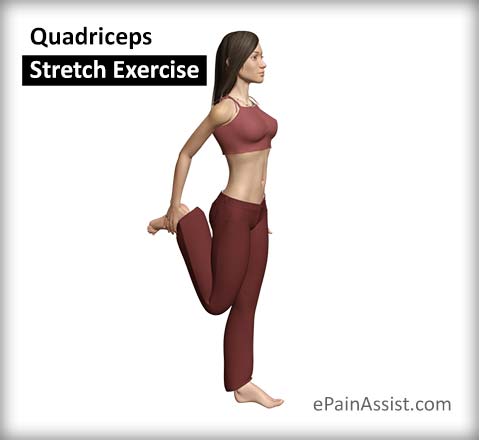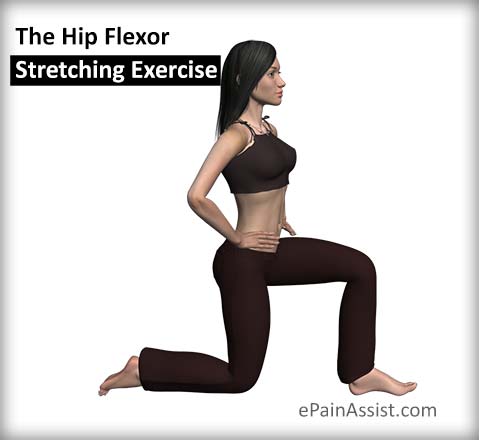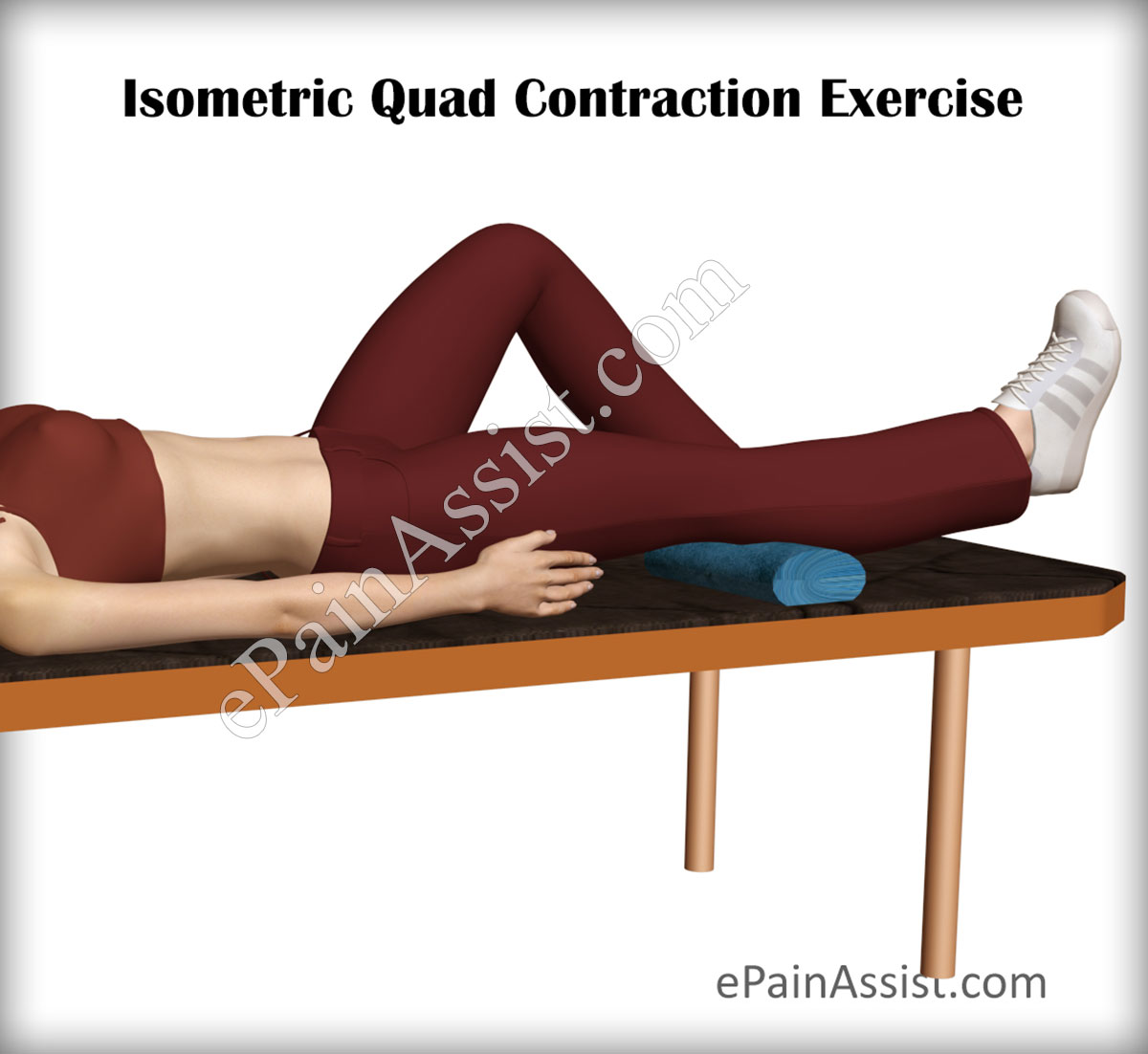Exercises for Patellar Tendonitis or Jumper’s Knee
Why Are Exercises Necessary for Patellar Tendonitis or Jumper’s Knee?
An injury to patellar tendon, which links the patella (kneecap) to the tibia (shinbone), is referred to as Patellar Tendonitis or Jumper’s Knee. Patellar Tendonitis or Jumper’s Knee mechanisms with the front thigh muscle. This muscle is capable of extending a persons’ knee therefore he can run, kick and jump.[1]
The reason why it is referred often as Jumper’s Knee is, sportsmen who frequently practice sport like basketball and volleyball which involves more jumping, often face to this problem. However Patellar Tendonitis or Jumper’s Knee may be caused to those who do not involve much in jumping, running and kicking activities.[2]
To avoid/heal this health issue which is Patellar Tendonitis or jumper’s knee, one can start with physical therapy (PT) in rehabilitation center with stretching and strengthening exercises to the muscles near the knees.
Stretching Exercises for Patellar Tendonitis or Jumper’s Knee
Stretching exercises are the first step in the physical therapy (PT) program in Patellar Tendonitis or Jumper’s Knee. Uncomplicated stretching workout sessions will be employing as a component of a Patellar Tendonitis or Jumper’s Knee rehab schedule.
Testing the Flexibility for Patellar Tendonitis or Jumper’s Knee

Testing the flexibility of the injured knee in the Patellar Tendonitis or Jumper’s Knee is the first step to test your existing flexibility which is in your quad muscles and hip flexor. To test the flexibility you can use Thomas-test.
Sit and relax on the edge of a sofa and bring the knee closer to the chest. Griping this Posture, recline backward upon the sofa. The free leg’s thigh should be in the straight/horizontal level. Travelling upwards of the thigh- this points out potential rigid hip flexors (Iliopsoas or Rectus femoris). The shin section of the open leg should fall down vertically. If it is not falling down vertically without any effort, this possibly will point out rigid quad muscles.
Quadriceps or Quads Stretch Exercise for Patellar Tendonitis or Jumper’s Knee

Quadriceps stretch exercise for Patellar Tendonitis or Jumper’s Knee can be done by simply stretching out the injured leg in standing position. When doing this exercise in the standing position one can cling to some object for balance, if you want you can try gripping the ear using the other arm. Try to maintain both the knees closely and bring the leg straight up to your hip without twisting it. You should be able to feeling of stretch in the front part of leg without any ache. In the premature sensitive stages of the therapy, stretch for about 10 seconds. Afterwards when the swelling has reduced completely, stretch out for about 30 seconds. Replicate 3 times in addition to stretch out as a minimum 3 times in a session.
The Hip Flexor Stretching Exercise for Patellar Tendonitis or Jumper’s Knee

The hip flexor stretching exercise can aid in complete stretching of the leg for Patellar Tendonitis or jumper’s knee. Place the injured knee joint on the ground with other leg outside and in the front along with its knee bent. Use padding so that there is no extra pressure on the injured knee and therefore not to worsen the injury.
Thrust your hips frontwards and maintain your spine up straight. Keep that posture for about 10 to 30 seconds. Replicate 3 times plus stretch out no less than 3 times in each session. Be cautious while lifting the uninjured leg up and getting into the position. If you feel any kind of pain you should discontinue the exercise immediately, it means that you are not ready and should wait out for more time (few weeks) before starting this exercise again.[3]
Strengthening Exercises for Patellar Tendonitis or Jumper’s Knee
Strengthening exercises for Patellar Tendonitis or Jumper’s Knee plays a major role in healing the patellar tendon. Strengthening exercises should start as soon as pain allows and be progressed slowly for a period of six months or more.
Isometric Quad Contraction Exercise for Patellar Tendonitis or Jumper’s Knee
You will start out your rehab schedule possibly by starting with isometric quad contraction exercise for Patellar Tendonitis or Jumper’s Knee. In the exercise of isometric quad contraction, the patient is made to clench his/ her injured knee’s quad muscles for 5 to 10 seconds and releases it. It is better to do this posture while lying down to reduce any extra pressure on the injured knee.

At first make a start with 3 sets with 8 repetitions keeping for about 5 seconds and increase equal to 4 sets with 12 repetitions keeping for 10 seconds. If it is hurting throughout, after or the following day in that case decrease the load. Athletes with healthy quadriceps volume should aim to advance to single leg eccentric squats when possible.
Single Leg Extension Exercise for Patellar Tendonitis or Jumper’s Knee
Single leg extension exercise for Patellar Tendonitis or Jumper’s Knee can really strengthen the knee joint. To make the patients’ quad muscles stronger, the leg lengthening machine would be used. It will be painful if full mass bearing exercises are performing. This is just one step of isometric exercises and it is not likely to spark off similar kind of pain which may cause when doing single leg squats.
Start with 3 sets with 10 repetitions by means of weightless confrontation focused on the final steps of movement as the leg make straight like this is the extent of movements. Do no further on the fine leg than you are capable to perform on the damaged leg. Slowly increase the confrontation when 3 sets with 10 or 12 repetitions become comfortable. Advance to single leg unusual squats as shortly as pain allows.
Eccentric Squats Exercise for Patellar Tendonitis or Jumper’s Knee
Eccentric squats exercise is perhaps the most significant exercise to get accurate in the therapy of chronic Patellar Tendonitis or jumper’s knee. The affected patient can start with squats using both legs together but should advance when possible onto one leg squats.

The work out is execute by squatting down little by little and get up more quickly. Try to utilize the fine leg to assist the upwards transfer rather than burdening the damaged knee. The purpose is to weigh down the tendon and muscle widely which take place on the downwards stage of the squat.
Start including 3 sets with 10 recurrences on a daily basis and progressively enhance up to 3 sets by 15 recurrences rather than increasing the burden. Attach with a specific weight level until they be able to be done very easily. If any pain is sensed throughout the exercise or afterwards or the following day then decrease the intensity. Applying ice after workout can help with ache and swelling.
Lunge Exercise for Patellar Tendonitis or Jumper’s Knee
The lunge exercise for Patellar Tendonitis or Jumper’s Knee should commence immediately pain allows plus it is a more challenging exercise which produce increasing strength and pace into the workout. It is more possible this workout will be initiated usually about 3 months after the onset of the rehab schedule.

The affected athlete stands by one leg keeping the other in front and curve the front knee as a result the thigh is level while the rear leg knee moves out towards the floor. This can be completed easier by not moving quite too low by the front leg. Begin with 1 set with 8 repetitions increasing to 3 sets with 15 reps.
Step Back Exercise for Patellar Tendonitis or Jumper’s Knee
Step back exercise for Patellar Tendonitis or Jumper’s Knee is more appropriate for the final stages of rehab treatment when the patient is trying to go back to more precise sports training. The patient steps back as well as then in one transfer steps reverse onto the step. This is an added volatile, polymeric exercise connected to the exact demands of sport. It makes the calf muscle work eccentrically; with the knee throughout the stepping back time and plyometrically as they thrust off.

By swapping consequently, both legs are trained and do not perform any further on the fine leg than you be able to accomplish with the damaged leg.[4]
Also Read:
